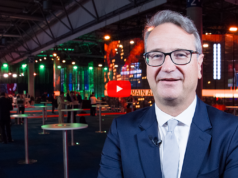
Rijnstate Hospital in Arnhem, The Netherlands, recently announced that the first patient has been enrolled in the HERCULES trial comparing endosuture aneurysm repair (ESAR) to standard endovascular aneurysm repair (EVAR) in the treatment of abdominal aortic aneurysms (AAAs) with wide proximal necks.
The HERCULES trial is an investigator-driven trial, led by Michel Reijnen (Rijnstate Hospital) and Konstantinos Donas (Asklepios Clinic Langen, Langen, Germany), in collaboration with Medtronic. Rijnstate is sponsoring this trial.
A Rijnstate press release notes that a randomised trial may answer the question as to which treatment strategy represents the best option for these specific patients. Participants will be randomly allocated into comparison groups for these two (already available) treatment options. The HERCULES trial is designed to compare the two above-mentioned techniques for treating patients who have an AAA, with a wide infrarenal neck diameter.
For this trial, a total of 300 participants will be recruited worldwide. Approximately 20 hospitals in Europe and 20 hospitals in the USA will participate. The expected time for patient inclusion is three years.
After the treatment, patients will be followed for a period of five years. The stent graft to be used is the Endurant II/IIs stent graft system (Medtronic; EVAR arm) and the Endurant II/IIs stent graft system in conjunction with Heli-FX EndoAnchor system (Medtronic; ESAR arm).
The primary endpoint of the HERCULES trial is a composite endpoint of outcomes measured via one-year post-treatment computed tomography (CT) scans. The primary endpoint will be the absence of: (1) type Ia endoleak or (2) migration of the upper portion of the stent graft of ≥5mm (as compared to the one-month post-treatment CT scan) or (3) aneurysm sac growth of ≥5mm (as compared to the one-month post-treatment CT scan).
The following (secondary) endpoints will also be analysed. The trial will examine whether the use of EndoAnchors in this patient group separately reduces the following endpoints:
- The occurrence of a type Ia endoleak;
- Migration of the uppermost portion of the stent graft of ≥5mm (as compared to the one-month post-treatment CT scan);
- Aneurysm sac growth of ≥5mm (as compared to the one-month post-treatment CT scan);
- Infrarenal neck dilatation of ≥3mm.













